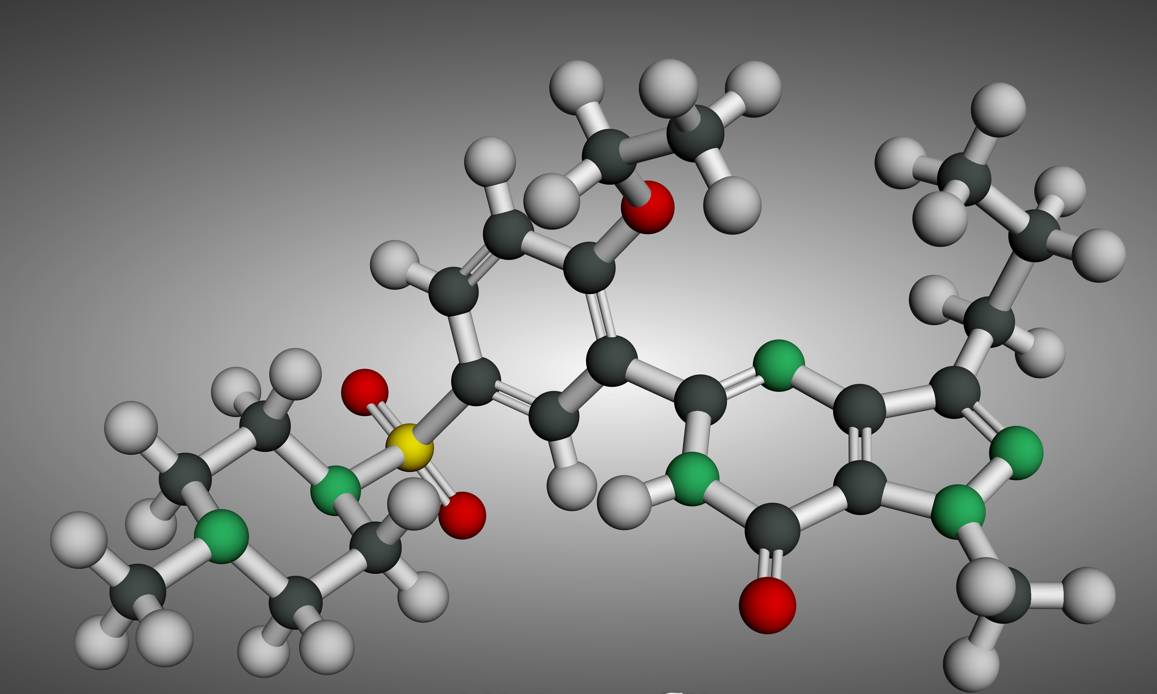Phosphodiesterase inhibitors are a class of drugs that inhibit phosphodiesterase enzymes. These agents can be tailored against specific families of phosphodiesterase, which number 11 in total,1 or can non-specifically block phosphodiesterase throughout the body. Phosphodiesterase inhibitors can be used to manage a number of medical conditions, including chronic obstructive pulmonary disease, erectile dysfunction, pulmonary arterial hypertension, and acute decompensated heart failure.2 They induce smooth muscle relaxation and the widening of blood vessels (vasodilation) by preventing their target phosphodiesterase enzymes from degrading and inactivating the cellular signaling molecules, such as cyclic guanosine monophosphate (cGMP) that induce these effects.2 Phosphodiesterase inhibitors also display interactions with some anesthetics, making them important to consider for anesthesia and surgery.
Phosphodiesterase inhibitors are important when it comes to surgery and anesthesia. Though these inhibitors do not induce anesthesia on their own, they can modify some of the effects of anesthesia if administered alongside anesthetic agents, as shown by several scientific studies. In a 2005 paper published in Anesthesia & Analgesia, Engelhardt et al. demonstrated that administering the phosphodiesterase inhibitor sildenafil alongside the anesthetic propofol can increase the speed of recovery from anesthesia without affecting the requirements for propofol sedation.3 The authors do not offer an explanation for this effect, but note that further testing of other phosphodiesterase inhibitors with propofol, and using several classes of phosphodiesterase inhibitor together, could further enhance this effect.
Interestingly, co-administering certain phosphodiesterase inhibitors with certain inhalation anesthetics seems to potentiate, or increase the effects, of the anesthesia. Phosphodiesterase 4 inhibitors and the anesthetic agent sevoflurane are both known to dilate bronchi, but in a 2014 study, researchers found that the two had an additive bronchodilator effect.4 They found that guinea pigs administered sevoflurane and the phosphodiesterase inhibitor roflumilast had lower total lung resistance and muscle tensions compared to guinea pigs that received only one or neither of the two drugs. Because patients with hyperreactive airway diseases, like chronic obstructive pulmonary disease and asthma, experience narrowing of the bronchi, a strategy of combining sevoflurane and roflumilast could lead to better outcomes. In a similar study, researchers found that several phosphodiesterase 4 inhibitors potentiated the effects of the anesthesia isoflurane in mice.5
Though patients taking phosphodiesterase inhibitors can typically receive most types of anesthesia, there are certain considerations that these patients should be aware of. Phosphodiesterase 5 inhibitors are contraindicated with nitrates, as these chemicals also increase cGMP levels, which can lead to increase vasodilation and potentially hypotension (low blood pressure).6 The anesthetic agent nitrous oxide and dietary sources of nitrate are not contraindicated with phosphodiesterase inhibitors, as neither contribute to plasma levels of nitrous oxide, but inhaled nitrates known as “poppers” can cause severe hypotension when taken with certain phosphodiesterase inhibitors.6 However, if the risks associated with phosphodiesterase inhibitors are managed, the drugs can be beneficial in a wide variety of surgical contexts. Studies report that phosphodiesterase 5 inhibitors reduce the risk of mortality and metastasis when administered to patients following surgery for colorectal cancer,7 and can be administered perioperatively to manage hypertension in patients undergoing liver transplantation.8 Future research into the properties of phosphodiesterase inhibitors will enable these drugs to benefit even more patients.
References
1. Levy, I., Horvath, A., Azevedo, M., de Alexandre, R. B. & Stratakis, C. A. Phosphodiesterase function and endocrine cells: links to human disease and roles in tumor development and treatment. Curr. Opin. Pharmacol. 11, 689–697 (2011), DOI: 10.1016/j.coph.2011.10.003
2. Padda, I. S. & Tripp, J. Phosphodiesterase Inhibitors. in StatPearls (StatPearls Publishing, 2023).
3. Engelhardt, T., MacDonald, J., Galley, H. F. & Webster, N. R. Selective Phosphodiesterase 5 Inhibition Does Not Reduce Propofol Sedation Requirements but Affects Speed of Recovery and Plasma Cyclic Guanosine 3′,5′-Monophosphate Concentrations in Healthy Volunteers. Anesth. Analg. 101, 1050 (2005), DOI: 10.1213/01.ane.0000168264.41341.7d
4. Zhou, J., Iwasaki, S. & Yamakage, M. Phosphodiesterase 4 Inhibitor Roflumilast Improves the Bronchodilative Effect of Sevoflurane in Sensitized Airways. Anesthesiology 120, 1152–1159 (2014), https://doi.org/10.1097/ALN.0000000000000160
5. Aragon, I. V. et al. Inhibition of cAMP-phosphodiesterase 4 (PDE4) potentiates the anesthetic effects of Isoflurane in mice. Biochem. Pharmacol. 186, 114477 (2021), DOI: 10.1016/j.bcp.2021.114477
6. Schwartz, B. G. & Kloner, R. A. Drug Interactions With Phosphodiesterase-5 Inhibitors Used for the Treatment of Erectile Dysfunction or Pulmonary Hypertension. Circulation 122, 88–95 (2010), DOI: 10.1161/CIRCULATIONAHA.110.944603
7. Huang, W., Sundquist, J., Sundquist, K. & Ji, J. Phosphodiesterase-5 inhibitors use and risk for mortality and metastases among male patients with colorectal cancer. Nat. Commun. 11, 3191 (2020), DOI: 10.1038/s41467-020-17028-4
8. Onoe, T. et al. Perioperative management with phosphodiesterase type 5 inhibitor and prostaglandin E1 for moderate portopulmonary hypertension following adult-to-adult living-donor liver transplantation: a case report. Surg. Case Rep. 4, 15 (2018), DOI: 10.1186/s40792-018-0423-6
